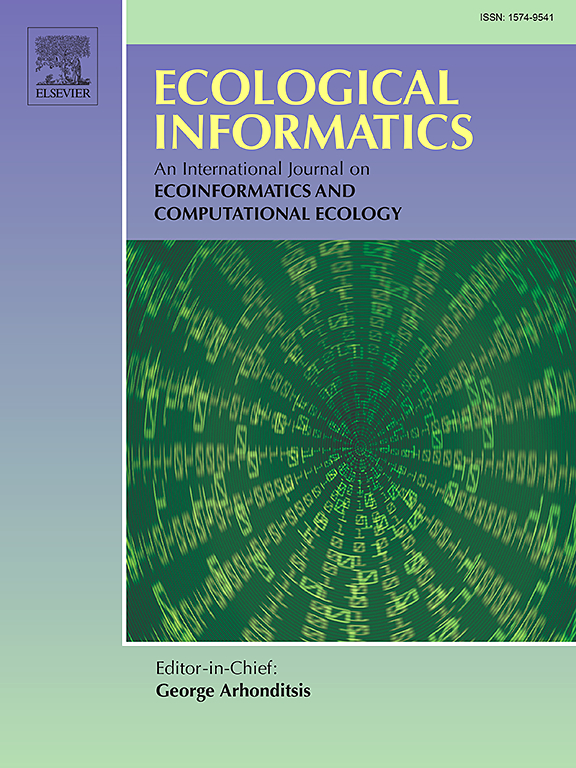Evaluating effects of data quality and variable weighting on habitat suitability modelling
IF 5.8
2区 环境科学与生态学
Q1 ECOLOGY
引用次数: 0
Abstract
Habitat modelling is important in the conservation and management of fishes and can be sensitive to data inputs and model configuration. Survey data used in Habitat Suitability Index (HSI) models may undergo changing sampling protocols over time, and these inconsistencies may impact results. Additionally, the various habitat variables included in HSI models are typically given equal weights, even though some variables may have greater influence over distribution than others. The Long River Survey, part of the Hudson River Biological Monitoring Program, in the Hudson River Estuary (HRE), has undergone considerable protocol changes, and was calibrated to address these issues in 2023. This survey and region are an excellent case study to compare two approaches in constructing HSI models: using calibrated versus uncalibrated abundance data and weighting all environmental variables equally or using a model-based weighting method. The results of this study suggest that using calibrated abundance data with unweighted habitat variables provide the most robust estimates for bay anchovy suitable spawning habitat in the HRE, which indicates that in cases when sampling has not been consistent over time, using calibrated abundance data in habitat suitability modelling may lead to improved models. Some model configurations were unable to identify a significant trend in suitable habitat over time and overestimated habitat quality illustrating the importance of carefully considering data inputs and model configuration when building habitat models to properly quantify suitable habitat and contribute to ecosystem-based fisheries management in the wake of climate change.
生境建模对鱼类的保护和管理非常重要,而且对数据输入和模型配置非常敏感。生境适宜性指数(HSI)模型中使用的调查数据可能会随着时间的推移而改变采样方案,这些不一致可能会影响结果。此外,尽管某些变量对分布的影响可能比其他变量更大,但 HSI 模型中包含的各种栖息地变量的权重通常是相同的。哈德逊河口(HRE)的哈德逊河生物监测计划(Hudson River Biological Monitoring Program)中的长河调查(Long River Survey)经历了相当大的协议变更,并于 2023 年进行了校准,以解决这些问题。这项调查和该地区是一个很好的案例研究,可用于比较构建恒星指数模型的两种方法:使用校准过的丰度数据与未校准的丰度数据,并对所有环境变量进行同等加权,或使用基于模型的加权方法。本研究结果表明,使用校准丰度数据和未加权的生境变量,可对大东区海湾鯷鱼适宜产卵生境进行最可靠的估计,这表明在取样不一致的情况下,在生境适宜性建模中使用校准丰度数据可能会改进模型。一些模型配置无法确定适宜栖息地随时间变化的显著趋势,并高估了栖息地质量,这说明在建立栖息地模型时仔细考虑数据输入和模型配置的重要性,以正确量化适宜栖息地,并在气候变化后促进基于生态系统的渔业管理。
本文章由计算机程序翻译,如有差异,请以英文原文为准。
求助全文
约1分钟内获得全文
求助全文
来源期刊

Ecological Informatics
环境科学-生态学
CiteScore
8.30
自引率
11.80%
发文量
346
审稿时长
46 days
期刊介绍:
The journal Ecological Informatics is devoted to the publication of high quality, peer-reviewed articles on all aspects of computational ecology, data science and biogeography. The scope of the journal takes into account the data-intensive nature of ecology, the growing capacity of information technology to access, harness and leverage complex data as well as the critical need for informing sustainable management in view of global environmental and climate change.
The nature of the journal is interdisciplinary at the crossover between ecology and informatics. It focuses on novel concepts and techniques for image- and genome-based monitoring and interpretation, sensor- and multimedia-based data acquisition, internet-based data archiving and sharing, data assimilation, modelling and prediction of ecological data.
 求助内容:
求助内容: 应助结果提醒方式:
应助结果提醒方式:


